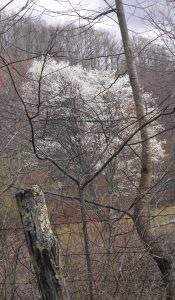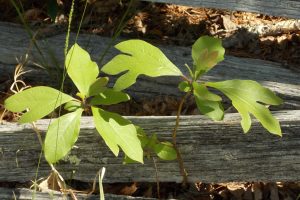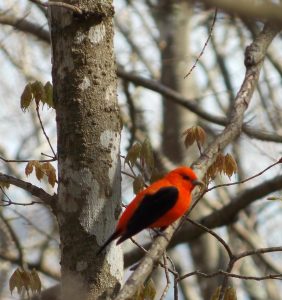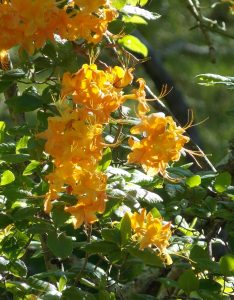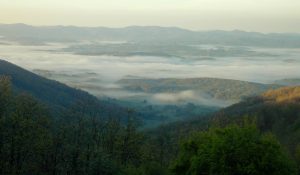FROM SHADBUSH TO AZALEA
THE BLESSING OF A LONG SPRING
Walt’s Campfire
Copyright
2019
The elevation range of the Appalachian mountains gives us hill folks a unique opportunity to experience a long spring season. As the period of daylight increases at the end of winter, the forest wakes up and the elevation changes allow us to see the progression of development in the forest plants, from the beginning of flowering at the warmer, lower elevations to the later flowering of the same species at cooler, higher levels. Associated with this progression of warming and increased light are hallmark plants that seem to line up in their appearance.
At the urging of my father, when I began my college career I focused on the natural world and it naturally followed that I would seek an integrated education in that regard, including both flora and fauna. During the ensuing years before graduation I experienced a variety of courses, including disciplines from the most basic to very specific. One course in the basic series, field botany, had a lasting impact and provided a framework for my understanding of Appalachian natural history. Coupled with basic earth science classes (soils, hydrology, limnology, etc) and later specific forestry classes (dendrology, ecology, and silviculture) I began to see our mountains for the complicated, integrated ecological system we so enjoy today. That this education took place in Tennessee (UT-Knoxville) with the Great Smoky Mountains as our outdoor laboratory was no small part of this education.
I enjoy the appearance of all of our spring plants but to me, the Shadbush (serviceberry, or as we call it, sarvice) is the most special. In a forest of brown and nakedness just as winter loosens its grip, the appearance of the stark white blossoms of the sarvice have always brought me such joy; its sudden appearance is the first promise of spring fulfilled. Named for its flowering at lower elevations when the shad and herring were running up our tidal creeks, and called serviceberry because the fruit produced by the tree is of importance to so many birds and animals in early summer, the flowering of our sarvice can be enjoyed over a protracted period due to the elevation changes found here. The sarvice may bloom in late February or early March in the low country of eastern Virginia or North Carolina, and mid-March continuing through April here at the different elevations of our hills. When the sarvice is blooming, the turkeys are starting to break up from their winter flocks, the first migrating song birds are arriving and the other tree buds are swelling. It is the fanfare of the change of seasons.
Since as you know I am a spring turkey hunter, I spend at least a part of every day in April and May in the Appalachian forest. The great joy of this for me is that I actually get to see time pass, as the green emerges from the forest floor and the nesting migrant songbirds arrive. It is an experience I anticipate each year and as is true with time and all good things, it passes by much too fast.
For me the end of this great awakening is the arrival of the wild azalea blooms at the upper elevations, joined by the ubiquitous rhododendron. This is the signal that our mountain spring is ready to give way to glorious summer and all it holds. During this two-month period many species give us a brief encounter in succession, the redbud and dogwood among them in their turn as April becomes May. Now I have to wait another year to see life rejuvenated in the Appalachians.
But in my heart it is always April.
